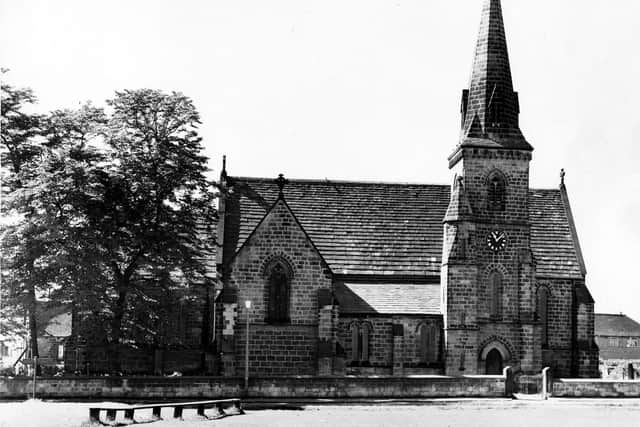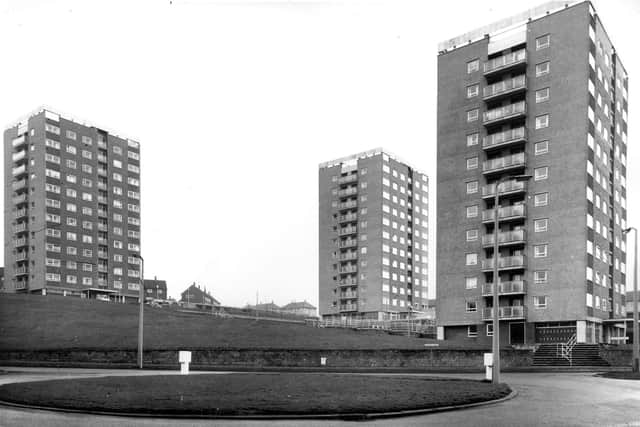Seacroft: How the Leeds satellite town featured in the Domesday Book came into being
The same is true of Seacroft situated around four miles east of Leeds city centre. It is listed in the Domesday Book and the name (originally Saecroft) is of Saxon origin – sae meaning pool or lake and croft meaning enclosure or farm.
Edward Baines in his West Riding Directory 1822 says: ‘in 1645 here happened an engagement between a detachment of the Parliament army, commanded by Thomas Fairfax, and a large body of the King’s horse, commanded by Lord Goring in which the latter gained a complete victory.’
Advertisement
Hide AdAdvertisement
Hide AdSeacroft Hall, considered to date from the 17th century, was built by the Shillito family, though, according to the Seacroft Parish website ‘there are references to the ‘’site of the manor, hall, chamber granges” in 1341.


Seacroft Grange, according to the source above, was built in 1627 and became known for a time as Tottie Hall after occupation by the Tottie family.
Charles Wesley visited Seacroft in October 1756. Just under five years later on July 25, 1761 John Wesley preached in the open air on the village green.
The consecration of the new Church of St James, Seacroft took place on Friday November 28, 1845. It was reported that a numerous body of clergy from the neighbourhood (amounting to upwards of 40) assembled at Seacroft Hall, the residence of John Wilson where the Lord Bishop of Ripon, officiating at the ceremony, was staying.
Advertisement
Hide AdAdvertisement
Hide AdAfter the service, the Bishop also consecrated the burial ground attached to the church. After the whole ceremony was concluded the Bishop and Clergy sat down to a meal at the National School organised by Mrs Wilson of Seacroft Hall.


The Church, in the early English style, was designed by Thomas Hellyer of Ryde, Isle of Wight. Local builder, Benjamin Russell was the contractor. The report added: ‘The chancel was in excellent taste being of painted glass by a Mr Miller of London.’ The site was given by Stephen Nicholson, Lord of the Manor. Seacroft at the time contained a population of 1,000.
On Monday April 27, 1874, four corner stones of the enlarged Wesleyan Methodist Chapel were laid. The original chapel dated from around the mid-18th century. Since that time alterations had been made, but it was found that the chapel was too small and old fashioned. Efforts were made to locate ground where a new building might be erected.
As a site could not be found, it was decided to enlarge the existing structure by carrying forward the front wall, and placing further back the wall behind. Also, a new roof three feet higher than the former one was built, and the chapel was reseated. Already accommodating 400, the alterations created 50 more seats. The cost of the alterations was estimated at £1,300.
Advertisement
Hide AdAdvertisement
Hide AdThe first stone was laid by Mrs Burrell, of Seacroft; the next by Mrs Wilkinson, of Stockhill Grange; the third by Isaac Chadwick of Whitby; and the fourth by W.S. Townend of Seacroft. Each person was presented with a silver trowel to perform the work.
The designs for the alterations and enlargement were made by Hill & Swann of Leeds; the building work by Marshall & Sons, Seacroft.
It was said that beautiful weather favoured the opening of the Fever Hospital, at Seacroft during the afternoon of September 29, 1904 by the Lord Mayor and Lady Mayoress of Leeds (Mr and Mrs A Currer Briggs). A very large gathering was present for the occasion and included the Lord Mayor of York, the Mayor of Bradford, Councillor E.E. Lawson (Chairman of the Leeds Corporation Sanitary Committee), and others.
The hospital on the south side of York Road was erected at a cost approaching £300,000. A Mr Hall, the architect, presented the Lord Mayor with a key to open the main door. The Mayor said the hospital would be practically free. Almost all patients would be treated there at the expense of the whole community.
Advertisement
Hide AdAdvertisement
Hide AdSteven Burt and Kevin Grady in The Illustrated History of Leeds (1994) mention that the first enlargement of Leeds occurred in 1912 with the inclusion of a number of townships, including Seacroft. This was to play a large part in the development of the area.
Following the death of Darcy Bruce Wilson on January 5, 1931, his executors offered for sale, during July of the same year, the Seacroft Hall Estate. Three years later, beneath an article headed ‘Vast New Housing Estate’ it was reported ‘that the District Valuer had been negotiating for the acquisition of 834 acres of land at Seacroft as a housing estate.’
A new village hall was opened at Seacroft from Saturday January 6, 1934. This was largely made possible by the generosity of the late Darcy Bruce Wilson. In his will he had left £1,000 for the erection of the hall, along with the necessary land.
During September 1936, the Leeds Housing Committee was inviting tenders for around 1,200 houses on the Seacroft estate. A statement issued announced this would be ‘the biggest undertaken under the Leeds rehousing schemes.’
Advertisement
Hide AdAdvertisement
Hide AdA.H. Blackah, chairman of the Housing Committee said: ‘We hope finally to have about 8,000 houses at Seacroft with a population of between 24,000 and 25,000. There will be a central civic area with provision for the usual municipal services…There will also be a central shopping area with subsidiary shopping areas, and there will be an adequate transport service to the estate. Sites will also be reserved for religious organisation, with churches, chapels and subsidiary buildings.
The first two houses to be built on the new municipal housing estate at Seacroft were illustrated in the Leeds Mercury on December 30, 1936. Two more, it was stated, were in the early stages of completion. A year later, the Corporation declared that some 60 acres had been allotted for industrial purposes when the Seacroft ‘satellite town’ estate was laid out.
Leeds Corporation had purchased Seacroft Hall as part of the Seacroft estate in the 1930s. By 1953 it had fallen into disrepair and a decision was made by the Leeds Corporation Parks Committee to have it demolished by the Works Department.
A building contract was given to Richard Costain (construction) Ltd in April 1963 for a new shopping town centre at Seacroft. The Queen, accompanied by the Duke of Edinburgh, opened the £1,500,000 10-acre complex on October 22, 1965. The Queen and Prince Philip were also pictured visiting a house on the Seacroft estate along with Leeds Director of Housing Karl Cohen.
Advertisement
Hide AdAdvertisement
Hide AdSeacroft Branch Library was established in June 1964. Two years later Seacroft Social Club opened for business on Sunday September 11, 1966. It was to stage full week variety shows between 8 and 11pm, opening with Lonnie Donegan followed by the Barron Knights. But, 10 months later, the club allegedly closed owing to lack of public support.
The 1960s saw a number of high-rise flats built in Seacroft. Amongst them were Bailey Towers, Barncroft Court, Barncroft Grange, Barncroft Heights and Barncroft Towers. On May 24, 1966, the Lord Mayor of Leeds Joshua S. Walsh was pictured opening the Queens view multi-storey flats at Seacroft. The 17-storey block was built by Tersons Ltd.
During the late 1990s work began on clearing the Seacroft Civic Centre. Then, work began on constructing the Seacroft Green Shopping Centre.
A report from late 2023, said that Leeds Corporation intended to demolish Bailey Towers, Brookland Towers and Ramshead Towers in Seacroft, but this might not occur until 2026.
Advertisement
Hide AdAdvertisement
Hide AdSeacroft Grange was first Listed in October 1951. Over time, it has been occupied by a number of tenants including Seacroft County Primary School. After being fire damaged, it was refurbished by structural and civil engineering consultancy JPG under the guidance of the Springfield Healthcare Group.
Thanks to Susan Stepan and Antony Ramm at Leeds Libraries for help with this piece.
Comment Guidelines
National World encourages reader discussion on our stories. User feedback, insights and back-and-forth exchanges add a rich layer of context to reporting. Please review our Community Guidelines before commenting.